Physostegia Benth.
slenderleaf false dragonhead, false dragonhead, lion’s heart, narrowleaf obedient plant, tidal marsh obedient plant, swamp obedient plant
Lamiaceae
Hygrophila, Hypericum, Limnophila, Pogostemon, Veronica
Virginia to Florida and Texas (United States)
commonly cultivated, sold, and traded among hobbyists:
Physostegia leptophylla Small
P. purpurea (Walter) S. F. Blake
information not available
not weedy
naturally emergentemergent:
(adj) (syn. emersed) with parts raised out of the water; extending up out of the water
, rarely submergedsubmerged:
(adj) (syn. submersed) under water; submerged below the water surface
, amphibiousamphibious:
(adj) of a plant able to live on land or in water
small to medium herb
Rhizomerhizome:
(n) an underground stem, usually growing horizontally, from which both roots and shoots emerge directly; the thick, above-ground stem of ferns
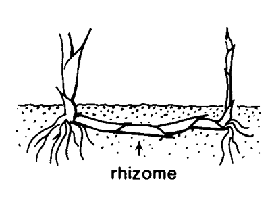 branching into numerous horizontal secondary rhizomes; stem erect or ascending, square. Leaves oppositeopposite:
branching into numerous horizontal secondary rhizomes; stem erect or ascending, square. Leaves oppositeopposite:
(adj) (of leaves) two leaves per node; in pairs on opposite sides of an axis
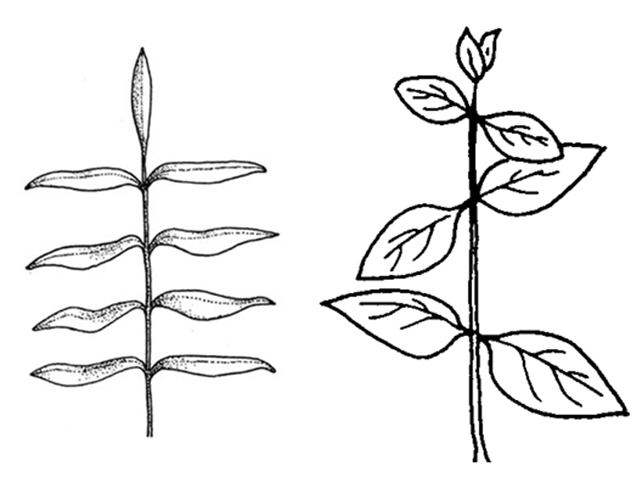 , typically basalbasal:
, typically basalbasal:
(adj) at or pertaining to the base, or point of attachment
, caulinecauline:
(adj) pertaining to or belonging to the stem
during flowering. Lower leaves petiolatepetiolate:
(adj) relating to or in the form of a petiole; bearing petioles
; leaf bladeblade:
(n) (syn. lamina) the flat, expanded part of a leaf, frond, or petal (excluding, e.g., the petiole)
 ellipticalelliptical:
ellipticalelliptical:
(adj) in the form of an ellipse (oval)
 to lanceolatelanceolate:
to lanceolatelanceolate:
(adj) lance-shaped; widest point below the middle, tapering to the apex
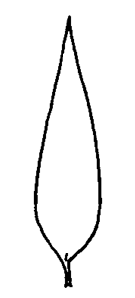 ; base cuneatecuneate:
; base cuneatecuneate:
(adj) wedge-shaped; triangular, with narrow end at the base
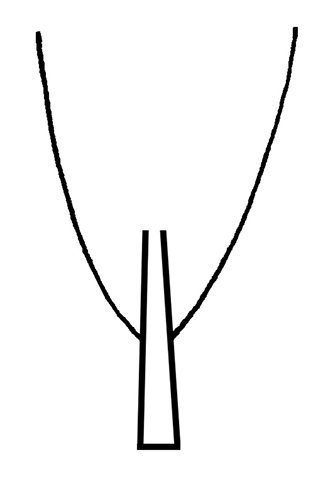 to attenuateattenuate:
to attenuateattenuate:
(adj) narrowing gradually to a point
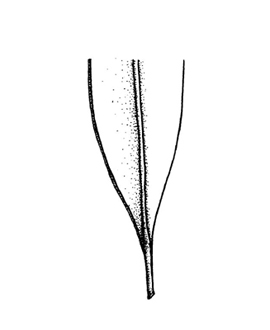 ; apexapex:
; apexapex:
(n) the point farthest from the point of attachment; the tip (often pointed)
obtuseobtuse:
(adj) with a blunt or rounded apex and sides coming together at an angle of more than 90 degrees
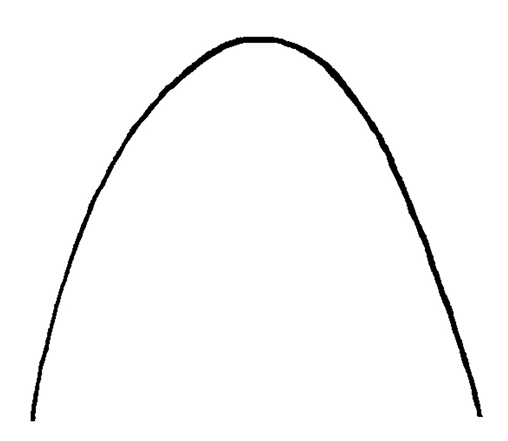 or acuteacute:
or acuteacute:
(adj) tapering to a sharp, pointed apex with more or less straight sides; broader than acuminate; forming an angle of less than 90 degrees ; marginmargin:
; marginmargin:
(n) edge; rim
entire: Upper leaves sessilesessile:
(adj) attached directly, without a stalk
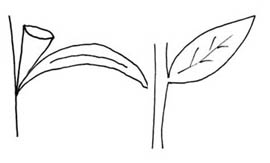 , usually clasping the stem; narrowly ellipticalelliptical:
, usually clasping the stem; narrowly ellipticalelliptical:
(adj) in the form of an ellipse (oval)
 to lanceolatelanceolate:
to lanceolatelanceolate:
(adj) lance-shaped; widest point below the middle, tapering to the apex
 ; base cuneatecuneate:
; base cuneatecuneate:
(adj) wedge-shaped; triangular, with narrow end at the base
 ; apexapex:
; apexapex:
(n) the point farthest from the point of attachment; the tip (often pointed)
acute to attenuateattenuate:
(adj) narrowing gradually to a point
 ; marginmargin:
; marginmargin:
(n) edge; rim
undulateundulate:
(adj) (of, e.g., a margin) with a wavy surface; wavy in the vertical (up and down) plane
or crenatecrenate:
(adj) (of a margin) with shallow, rounded teeth
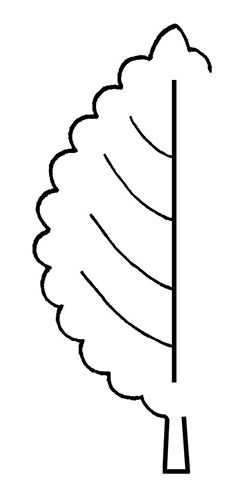 . Inflorescenceinflorescence:
. Inflorescenceinflorescence:
(n) the arrangement of flowers on the floral axis
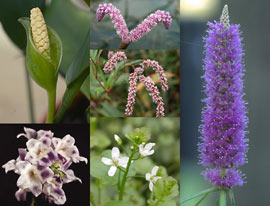 a terminalterminal:
a terminalterminal:
(adj) at the apex
racemeraceme:
(n) an indeterminate, unbranched inflorescence having pedicelled flowers on a usually elongated axis (may be cymose)
 ; bracts lanceolatelanceolate:
; bracts lanceolatelanceolate:
(adj) lance-shaped; widest point below the middle, tapering to the apex
 to ovateovate:
to ovateovate:
(adj) egg-shaped in outline; generally with the broad end at or near the base
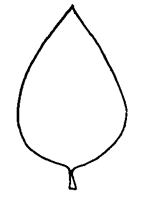 , with attenuateattenuate:
, with attenuateattenuate:
(adj) narrowing gradually to a point
 base. Flowers loosely spaced, zygomorphiczygomorphic:
base. Flowers loosely spaced, zygomorphiczygomorphic:
(adj) bilaterally symmetrical; symmetrical along only one plane
; calyxcalyx:
(n) the outer whorl of the perianth; all the sepals of a flower
 tube 5-lobed, lobes tri angularangular:
tube 5-lobed, lobes tri angularangular:
(adj) having projecting longitudinal angles; undulate, but sharply angled rather than gently rounded
-lanceolate, apexapex:
(n) the point farthest from the point of attachment; the tip (often pointed)
acute, glandular-punctate or not; corollacorolla:
(n) the inner whorl(s) of the perianth; all the petals of a flower
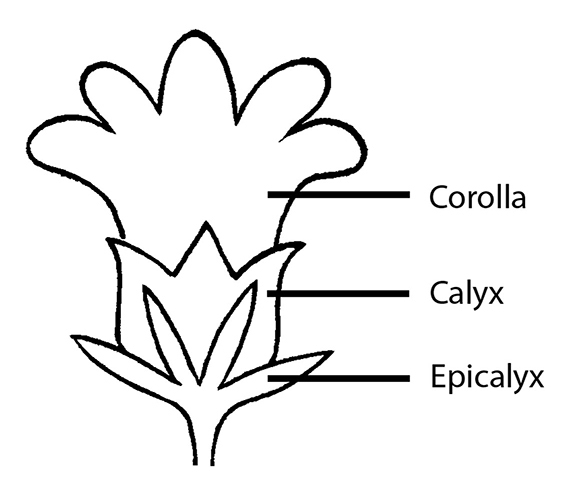 tube 2-lipped, upper lip hood-like, lower lip 3- lobedlobed:
tube 2-lipped, upper lip hood-like, lower lip 3- lobedlobed:
(adj) divided into (usually rounded) segments
; stamens 4; pink to lavender.
edges of rivers and streams; common in shallow water, wooded rivers, swamps, fresh and brackish marshes
A genus comprising about 15 mainly wetland species, of which Physostegia leptophylla is the only species common in standing water. Synonyms of P. leptophylla are Dracocephalum leptophyllum (Small) Small, Dracocephalum veroniciforme (Small) Small, and Physostegia veroniciformis Small.